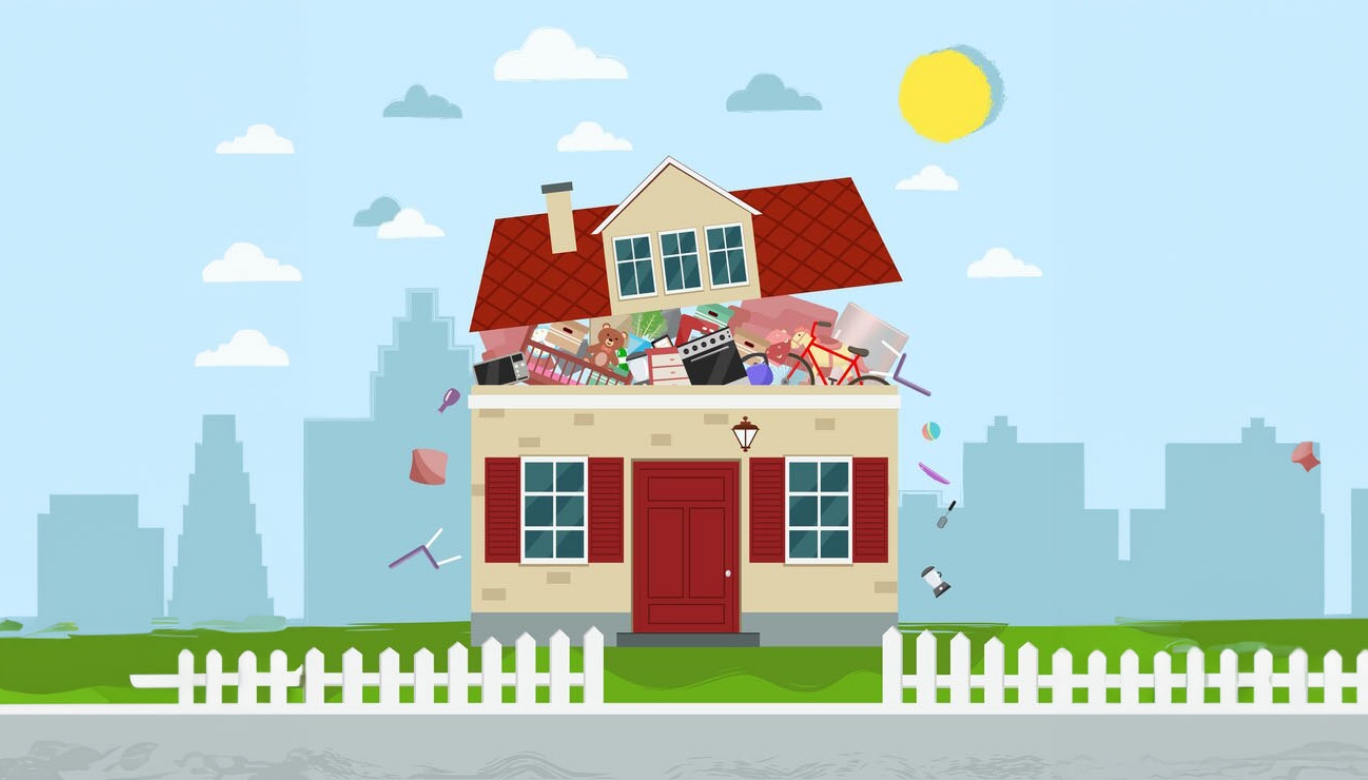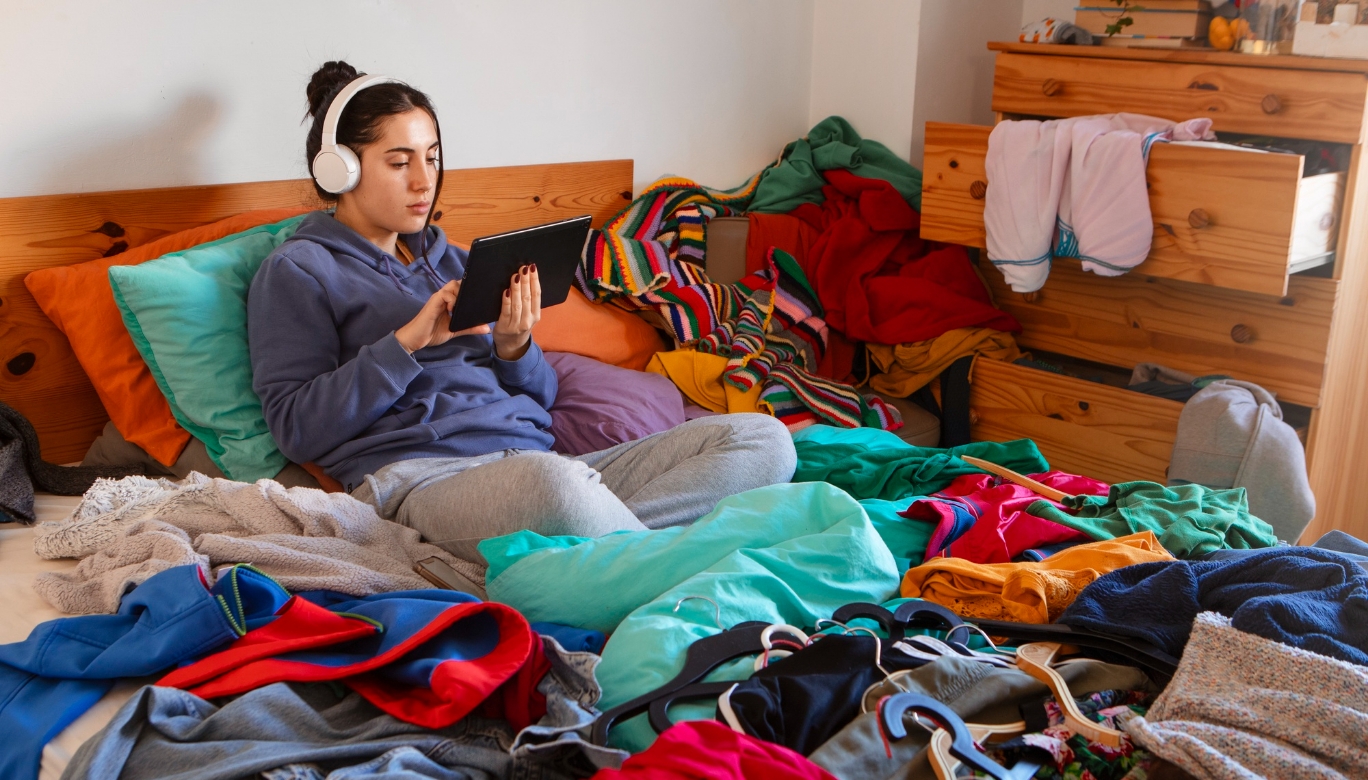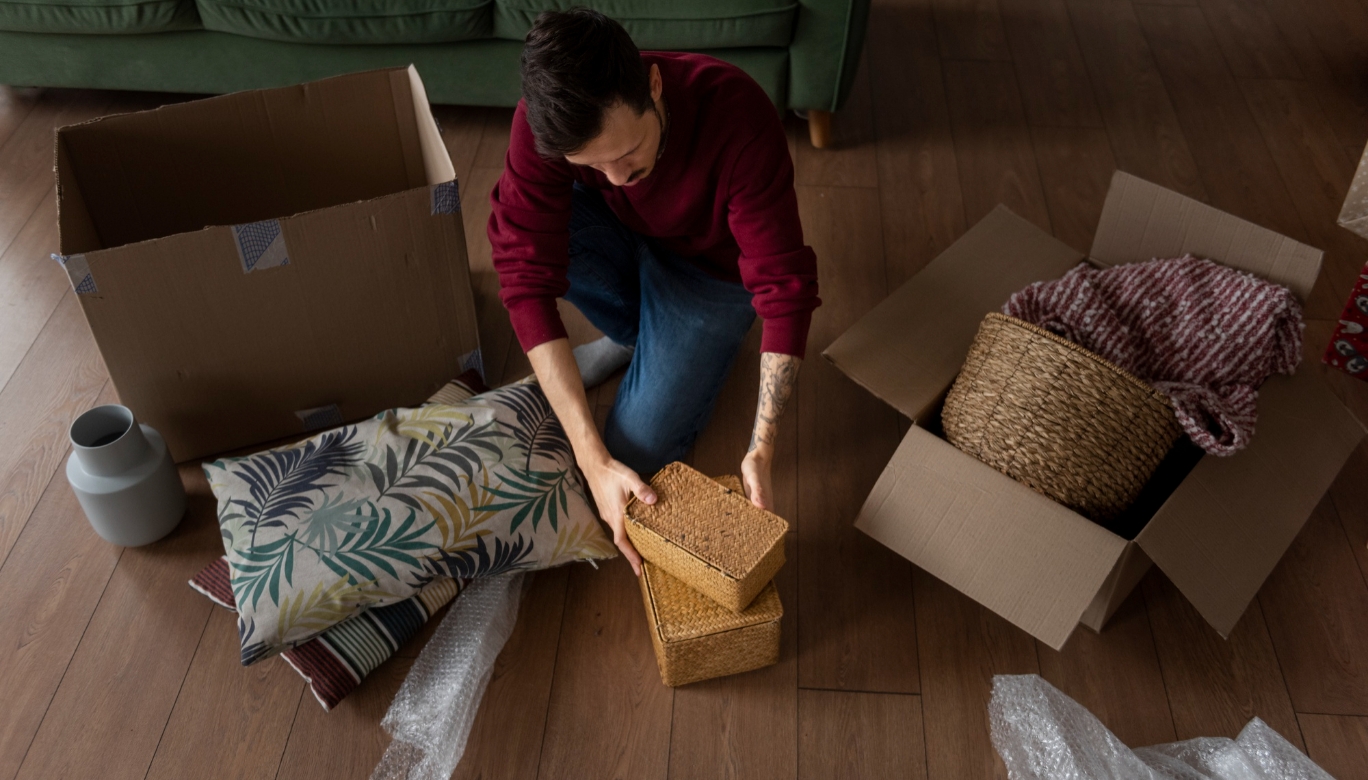How to live with a hoarder
by Anonymous

If you’d like to declutter your home, there’s tons of advice available on how to go about it, but what do you do if the clutter doesn’t belong to you? How do you cope if you live with a hoarder? Whether it’s your partner, your parent, a housemate or a child, if you have to live while drowning in someone else’s stuff, it can feel … well, frankly, suffocating. My mother came to live with us after she was widowed. There are many benefits to having her as part of the household, but we did not foresee that when she arrived, so would her lorryloads of stuff. She’s over eighty, and will never live alone again, yet she can’t bear to get rid of her furniture or her kitchen stuff. She’s always been an avid stamp collector, and we now have dozens of boxes of stamps, postcards and albums that she would like to organise ‘one day.’
After my parents retired, Mum took up carbooting as a hobby. She would buy things cheaply on auction and sell them at car boots. The problem was … she would always buy more things than she sold, and my parents’ house began to fill up alarmingly quickly. I honestly don’t know how my father coped. I remember visiting once with my daughter when she was a toddler, and trying to prepare a meal in their kitchen. This was quite an achievement as there was not one square inch available for chopping, and I had to clear several boxes to get to the oven. The junk she had carried
around with her since childhood, added to the utter clutter she has collected during her carbooting career has all come with her to our house, and whatever she can’t fit into her bedroom has had to go into the garage, and there it will stay until she sorts it out ‘one day.’
Now that she lives with us, she spends most of her time in the kitchen, where she has commandeered a large part of the kitchen table. I get it: the kitchen’s warm and it’s near the kettle. The trouble is that her stuff (papers, scissors, tissues, pens, pencils, language books, dictionaries, crosswords, sudoku puzzles, books on bridge strategies, lotto tickets, scratchcards, paperweights, stamps, stickers, seeds, cuttings, plant pots, snacks, empty wrappers etc etc) tends to creep out of her corner to every part of the kitchen. She never throws anything away, and every time she goes out, she comes back with more and more stuff. She keeps old teabags, coffee grinds and eggshells for the garden. We also have jamjars full of pineapple heads and ginger growths that she’s rooting in the kitchen. It is infuriating. I remember very well (shudder) what her house used to be like, so I know what ours could turn into if left to her own devices. The piles would grow into mountains, and I would tear my hair out.

It's hard enough to fix your own bad habits, but it’s nigh on impossible to change someone else’s. At first, I tried reasoning with her. I got tetchy a couple of times, especially when the kitchen table was so covered with junk that it was impossible to sit down to a meal, but I just ended up feeling terribly guilty for upsetting her. I tried explaining how her hoarding affects me. This also turned into a distressing and guilt-inducing conversation. Ultimately, nothing works. I’ve therefore stopped asking her to change her behaviour. Instead, I’ve made a big effort to understand it. She grew up on a rural farm in the middle of nowhere. Her parents were dirt poor, not only in money but also in time, and she and the other kids were left to bring themselves up as best they could. Toys were a rare luxury, and the few possessions the family owned were invested with immense importance. Nothing was wasted, and if anything was ruined or broken, that was a mini-tragedy.
I find it liberating to donate or throw away things I no longer need or use. I love being able to find things easily. I love clear surfaces. To me, a beautiful room is one that is clear and spare, with clean lines and lots of light. When I look at my mother’s things, I see a pile of junk. But I’ve realised that when she looks at them, she sees something completely different. She sees something special. They’re her things. She needs them. Yes, even that funny-looking cup with a broken handle, the piano metronome, the Super Mario egg timer, the novelty pink stapler, the butterfly key ring, the marble collection, the Elvis toaster with the dodgy plug. They may come in handy one day. She isn’t being lazy or stubborn or difficult by hanging on to these things, as well as others she has never used and will never use in the future. She’s simply afraid - of loss, of waste, of emptiness. Her things ground her and make her feel safe. They’re a kind of emotional armour, and they give her a sense of control. She's had a long and interesting life, but it has been
unpredictable and traumatic at times, so she needs to feel secure. I appreciate that our home is hers too, for better or worse, and therefore it needs to accommodate her things.
These days, I only ask her that she occupies no more than one third of the kitchen table, so the rest of it is free. When we have visitors, I ask her to box her (kitchen table) things temporarily so we can all have breakfast together. When she comes home from a shopping trip with yet more detritus, I’ll ask her to put it away in her room, but only after a decent interval. I’ve offered to help her organise or tidy up – she always refuses. I never get rid of anything without asking. She remains terrified that I’ll throw her belongings away when her back’s turned. I understand that to her, that would be a terrible betrayal. I’ve accepted that a corner of my kitchen will always look like Steptoe’s yard, that my garage will remain chockful of stuff that will do nothing but gather cobwebs, and that unless my mother has extensive therapy she will continue to amass junk that is ‘just the thing’ or that ‘could come in handy one day.’
So if you live with a hoarder, you have my sympathy, and this is what I’d advise: negotiate neutral zones, where compromise is possible. Set some reasonable boundaries: maybe the living room or the kitchen can stay clear, but give your hoarder a space where they can keep their ‘treasure’. Stake out some space for yourself. Your sanctuary could be a desk, a corner, even just a drawer, but make it clear that it’s yours and it’s not to be messed with. Even one single uncluttered shelf or surface is a victory, a visual breath of fresh air. If need be, find some calm elsewhere: a café, a park bench, even your car.

It's a hard truth, but accept that if your hoarder doesn’t want to change, you can’t make them. But you can have an honest conversation. Let them know how it affects you and meet them halfway. Be kind, but don’t be a doormat. Love your hoarder, but don’t enable them more than you have to. Just remember: sometimes a tidy drawer is a little triumph.
On the positive side, I’m able to joke with my mother about her hoarding tendencies. She knows she has them, but is unable to change. For myself, I’m an early advocate of döstädning, popularised by Swedish artist Margareta Magnusson in her book The Gentle Art Of Swedish Death Cleaning. It’s the process of slowly but deliberately
Features












